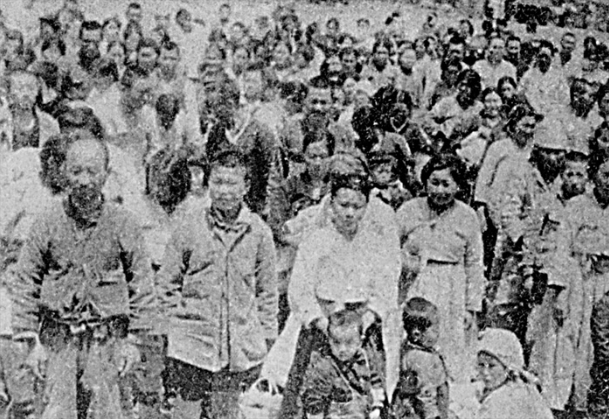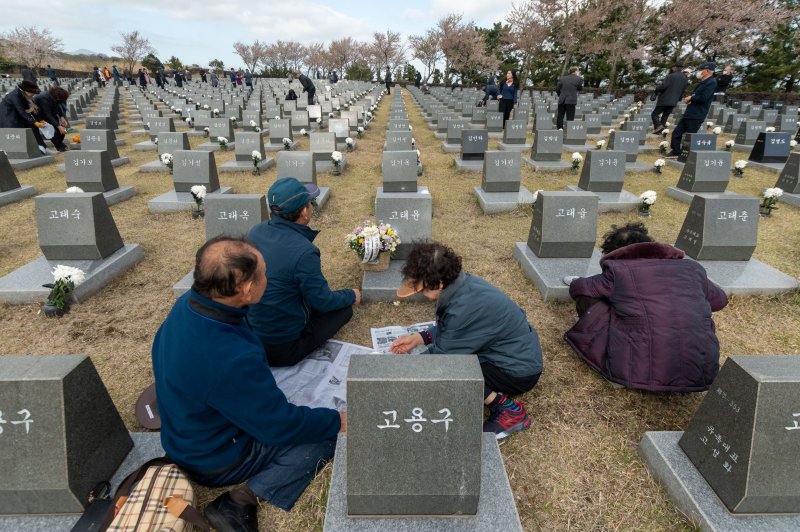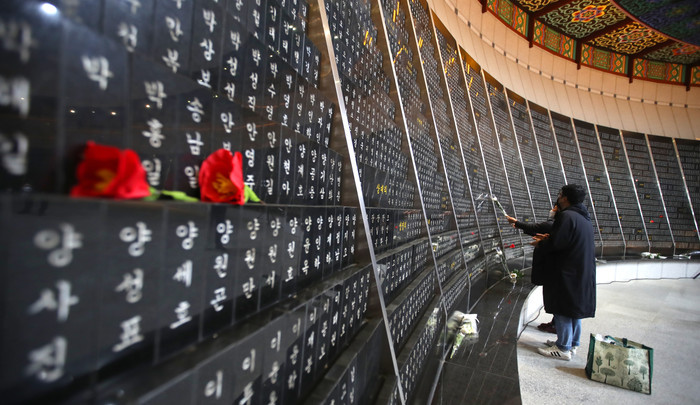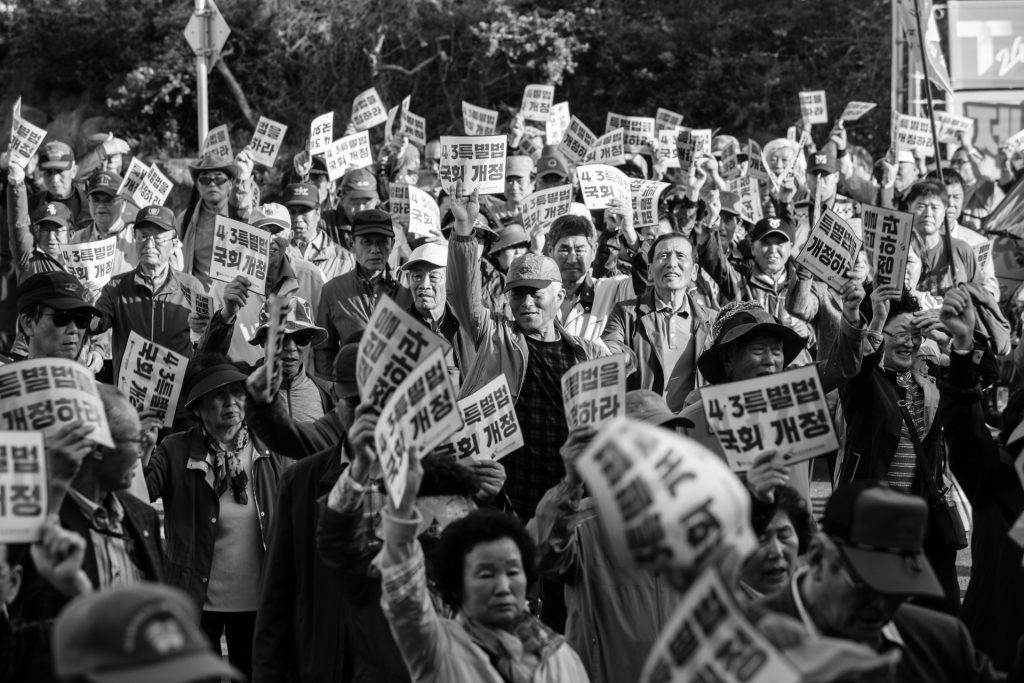
Gwaneumsa, the first Buddhist temple on Jeju-do, has gone through multiple cycles of destruction and reconstruction. Most sources put the original construction of the temple at the year 1046, although some argue that it dates back to the Tamna State—the state that presided over the island before it became a vassal of the Goryeo Dynasty. The first destruction of the temple in 1702 resulted from widespread anti-Buddhist sentiments of the time, sanctioned and supported further by the staunchly Confucian ruling state. All temples on the island were completely destroyed. It was only rebuilt in 1909 by monk An Bongryogwan. He faced local opposition1—most likely due to the association of Korean Buddhists as colonialist Japanese collaborators at the time2. It survived for another 39 years before being destroyed again by the Jeju Uprising of April 3rd, 1948.

The Jeju Uprising is infamous for the brutality exhibited in its repression—it is considered by some to be the true start to the Korean War. It resulted from general dissent on the island about the U.S. military occupation, government and rule of the southern peninsula in addition to the practices of the emergent Syngman Rhee administration (otherwise known as the first Republic of Korea) after the dissolution of the Japanese colonial government. Many insurgents saw the new government as reminiscent of the recently removed Japanese colonizers.3 On April 3rd, hundreds of communist guerillas attacked police stations, sparking nine years of internal warfare. Civilians and anyone suspected of being affiliated with the communist guerillas were jailed, tortured and/or executed by the U.S. sanctioned Rhee government—a practice that resulted in a death toll of 80,065 or approximately one-third of the entire island’s population of 210,000. The majority of the 73,576 recorded insurgents killed were most likely civilians caught in the conflict. As the military police drove many of the guerillas into Mt. Hallasan, Gwaneumsa Temple burned down in the process of attempting to drive them out. Many unaffiliated young men also fled to these mountains as they were suspected of contact with insurgents—and subsequently killed4.

Following the end of the uprising, the government proceeded to heavily suppress and censor any mention of the event. In the following fifty years, any mention of the massacres were grounds for imprisonment, beatings, or torture by the government5. Mourning rituals for victims and family were forbidden, disrupting the regular grieving process for every affected family on Jeju-do—and, due to the large casualties, most (if not all) families were affected6. Seong Nae Kim, writing on the process of ritual as a form of healing, describes this censorship as a kind of coerced forgetting, in which memories themselves become dangerous to the state and consequently, the individual7. It was under these circumstances that Gwaneumsa Temple was again rebuilt—reconstructed under oppressive censorship of the very event that caused its destruction.

In the present day, Gwaneumsa Temple now serves as a popular tourist location and a thriving Seon Buddhist temple8. The focus of my analysis below will be on the possible impact reconstructing Gwaneumsa Temple under such circumstances has on religious practice. I reference Seong Nae Kim’s field work on shamanistic ritual as a means for processing unresolved grief in Jeju-do and Myung-Lim Park’s work on contemporary peacemaking in Jeju-do heavily. With regards to Seong Nae Kim’s work, I crossapply her analysis of shamanistic ritual to Buddhist ritual spaces (i.e., Gwaneumsa Temple) while recognizing that this is an imperfect comparison. I argue that there is ample evidence for the overlap between shamanistic and Buddhist practitioners on the island and insofar that religion is a Western import, the differences between the effects of two different practices on the same shared trauma is not as large as the similarities.

Seong Nae Kim claims in her fieldwork that the “‘mere suffering’ of ordinary persons such as…[a] headache or…bad luck is accumulated over time [and that] the bodily symptoms are transformed into the stigmata of the historical tragedy of the ideological division”. Furthermore, through her interviews of shamans on Jeju-do, she found that “the agents of people’s illnesses and personal misfortune were directly or indirectly identified as the spirits of those who died during the April Third Uprising”. Repressed personal memory, then, enters what she names the popular memory—a popular memory that manifests itself into religious spaces and practices9. Heonik Kwan adds another dimension to this argument, noting that local religious groups “sought to translate politics” into religious language10. We see Gwaneumsa Temple and other religious spaces on the island as a body through which both politics and trauma intersect. Reconstruction under censorship mirrors the reconstruction of memory under coerced forgetting observed in the native Jeju-do population. Furthering this metaphor as a method of analysis, it follows that popular memory of the temple under reconstruction would similarly change with repression—thus the physical presence of the temple is such that the temple is permanently changed from its previous reincarnation (despite outward appearances), a state similar to that of Jeju-do itself. Another study conducted by Myung-Lim Park concludes that Jeju-do has become a space of great forgiveness and tolerance in the wake of the truth commission of the 2000s, utilizing the symbolic and reconciliatory gestures of forgiveness practiced by affected residents. One gesture of offering worship and grieving rituals by people whose family had been killed in the conflict for the dead executioners exemplifies the forgiving nature of this reconciliation11.

I propose two alternative, yet complementary, ways of viewing this process. The first is to view this process as an extension of suppressed memories and a rewriting of a larger, popular memory as Kim argues. In the face of unresolved grief, forgiveness may be the only way to cope with deep familial trauma that has been repressed for years. The second is to view the reconciliatory process as genuine forgiveness; this case proposes that Gwaneumsa Temple’s rebuilding is not a haunting of its past self, but a reincarnation that presents new possibilities for moving forward. Such acts like the temple stay program and its general welcoming attitude towards foreigners would suggest that this is moreso the case. Both views have credit and, when taken together, add to each other a dimension of truth—used as tools for analysis, they paint a fuller picture of what recovering from state trauma may look like in religious spaces.
- “자동등록방지를 위해 보안절차를 거치고 있습니다.” jejugwaneumsa.or.kr. Accessed February 23, 2024. http://www.jejugwaneumsa.or.kr/. ↩︎
- Maoz, Zeev, and Errol A. Henderson. “Religion and International Conflict.” In Scriptures, Shrines, Scapegoats, and World Politics: Religious Sources of Conflict and Cooperation in the Modern Era, 146–223. University of Michigan Press, 2020. http://www.jstor.org/stable/10.3998/mpub.11353856.8. ↩︎
- Cumings, Bruce. 2010. The Korean War: A History. New York Modern Library. ↩︎
- Kim, Seong Nae. “LAMENTATIONS OF THE DEAD: THE HISTORICAL IMAGERY OF VIOLENCE ON CHEJU ISLAND, SOUTH KOREA.” Journal of Ritual Studies 3, no. 2 (1989): 251–85. http://www.jstor.org/stable/44368940. ↩︎
- Kim, Hun Joon. The Massacres at Mt. Halla: Sixty Years of Truth Seeking in South Korea. Cornell University Press, 2014. http://www.jstor.org/stable/10.7591/j.ctt5hh0hs ↩︎
- Park, Myung-Lim. “Towards a Universal Model of Reconciliation: The Case of the Jeju 4.3 Incident.” Journal of Korean Religions 9, no. 1 (2018): 105–30. https://www.jstor.org/stable/26594683. ↩︎
- Kim, Seong Nae. “LAMENTATIONS OF THE DEAD: THE HISTORICAL IMAGERY OF VIOLENCE ON CHEJU ISLAND, SOUTH KOREA.” Journal of Ritual Studies 3, no. 2 (1989): 251–85. http://www.jstor.org/stable/44368940. ↩︎
- “자동등록방지를 위해 보안절차를 거치고 있습니다.” jejugwaneumsa.or.kr. Accessed February 23, 2024. http://www.jejugwaneumsa.or.kr/. ↩︎
- Kim, Seong Nae. “LAMENTATIONS OF THE DEAD: THE HISTORICAL IMAGERY OF VIOLENCE ON CHEJU ISLAND, SOUTH KOREA.” Journal of Ritual Studies 3, no. 2 (1989): 251–85. http://www.jstor.org/stable/44368940. ↩︎
- Kwon, Heonik, and Seong Nae Kim. “Religions in Cold War Korea and Peacemaking: Guest Editors’ Introduction.” Journal of Korean Religions 9, no. 1 (2018): 5–10. https://www.jstor.org/stable/26594679. ↩︎
- Park, Myung-Lim. “Towards a Universal Model of Reconciliation: The Case of the Jeju 4.3 Incident.” Journal of Korean Religions 9, no. 1 (2018): 105–30. https://www.jstor.org/stable/26594683. ↩︎